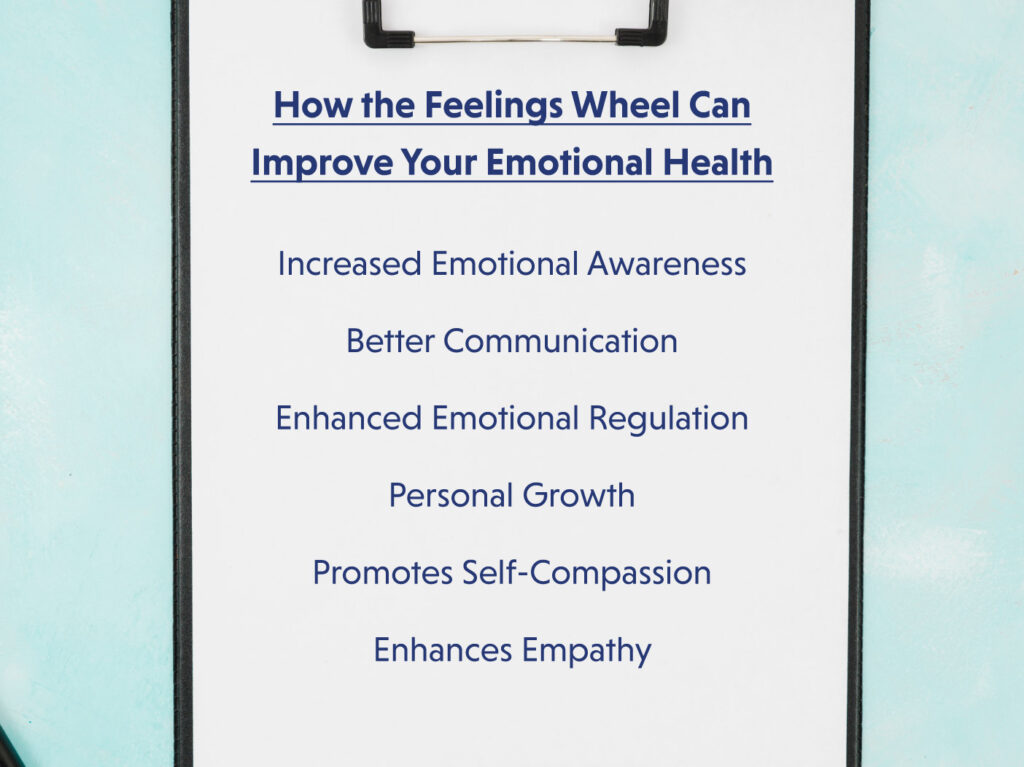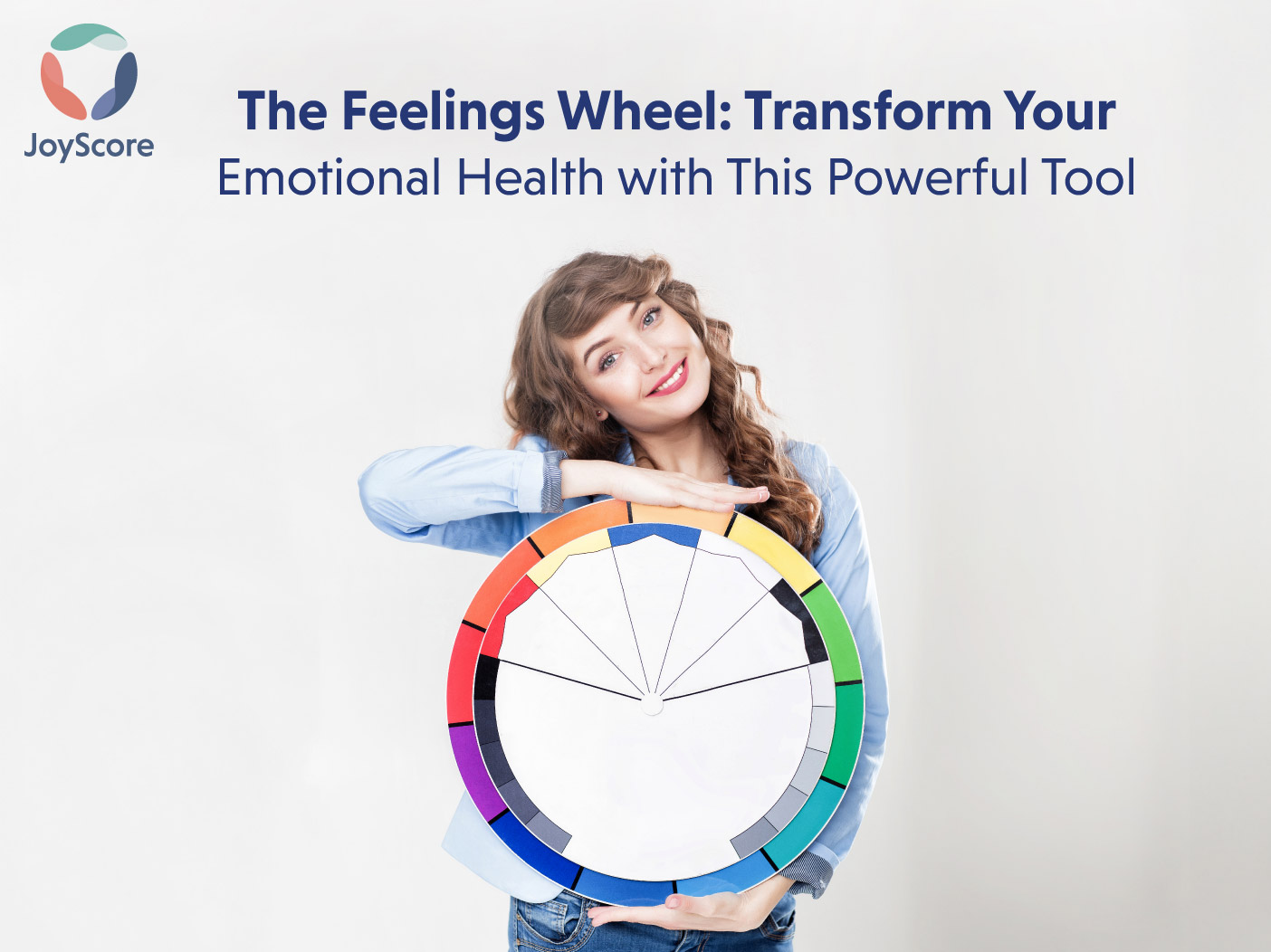Emotional health is a crucial aspect of our overall well-being, yet it’s often overlooked in our busy lives. One powerful tool that can help us better understand and manage our emotions is the Feelings Wheel. This simple yet effective tool can transform the way you relate to your feelings. By incorporating the Feelings Wheel in various settings, it helps you navigate life’s ups and downs which then start to become easier. In educational environments, it helps students develop emotional literacy. In the workplace, it promotes better communication and emotional intelligence among employees. Parents can also use it to assist children in understanding and expressing their emotions effectively.
What is the Feelings Wheel?
The Feelings Wheel, created by Dr. Gloria Willcox, a renowned psychologist, is a visual aid designed to help people identify and articulate their emotions. It consists of a colourful wheel divided into several sections, each representing a different category of emotions. The primary emotions are placed at the center, and as you move outward, the feelings become more specific.
The wheel typically includes six primary emotions: joy, sadness, fear, anger, surprise, and love. Each primary emotion branches out into more nuanced feelings, helping you pinpoint exactly how you feel.
Key Components of the Feelings Wheel
The Feelings Wheel is structured into three distinct layers. Each layer helps narrow your emotions from broad categories to more specific feelings, offering a comprehensive understanding of your emotional state.
- Primary Emotions: These are the core emotions that form the center of the wheel. Common primary emotions include joy, sadness, anger, fear, surprise, and love. These foundational emotions are universally recognized and form the basis for more nuanced feelings.
- Secondary Emotions: The next layer expands on the primary emotions, breaking them into more detailed categories. For example, you might find feelings like contentment, pride, and enthusiasm under joy. This layer helps in specifying the type of primary emotion you are experiencing.
- Tertiary Emotions: The outermost layer includes even more specific emotions. For instance, under anger, you might find secondary emotions like frustration or annoyance, which further branch out to specific feelings such as indifference or rage. This granularity allows for precise identification and articulation of emotions.
How the Feelings Wheel Can Improve Your Emotional Health?
- Increased Emotional Awareness: Regularly using the Feelings Wheel can help you become more aware of your emotions. This awareness is the first step toward emotional intelligence, crucial for healthy relationships and personal well-being.
- Better Communication: Accurately describing your emotions can improve communication. It can help you express your needs and feelings more clearly, reducing misunderstandings and conflicts.
- Enhanced Emotional Regulation: Identifying your emotions can help you manage them more effectively. When you know what you’re feeling, you can choose healthier ways to cope with those emotions.
- Personal Growth: Understanding your emotions can lead to personal growth. It can help you identify patterns in your emotional responses and work on areas where you want to improve.
- Promotes Self-Compassion: You can treat yourself with more kindness and empathy by identifying and understanding your emotions. Recognizing that it’s normal to feel a wide range of emotions can reduce self-criticism and promote self-compassion.
- Supports Mental Health Awareness: Using the Feelings Wheel regularly can help you notice patterns and changes in your emotional state, which can be crucial for identifying mental health issues early and seeking appropriate help.
- Enhances Empathy: By understanding your own emotions, you can become more attuned to the feelings of others. This increased empathy can improve your relationships and foster a more compassionate interaction approach.
How to Use the Feelings Wheel?
Using the Feelings Wheel is simple. When you’re experiencing a strong emotion, take a moment to consult the wheel. Start at the center and work outward, identifying the primary emotion and then the more specific feeling. This process can help you articulate exactly what you’re experiencing.
For example, if you’re feeling angry, you might start with the primary emotion of anger and then move outward to discover that you’re actually feeling frustrated or resentful. This deeper understanding can help you address the root cause of your feelings.
How Can the JoyScore App Enhance Your Emotional Health?
The JoyScore app is designed to help you achieve greater joy and well-being in your life. Here’s how it can complement the use of the Feelings Wheel:
- Daily Check-Ins: The JoyScore app offers daily check-ins to encourage you to reflect on your emotions. Incorporating the Feelings Wheel into these check-ins allows you to gain a more profound understanding of your emotional condition.
- Personalized Activities: Based on your emotional check-ins, the JoyScore app suggests personalized activities to boost your mood and overall well-being. Whether it’s mindfulness exercises, physical activities, or creative outlets, these suggestions can help you manage your emotions more effectively.
- Emotional Tracking: The app allows you to track your emotions over time. By regularly using the Feelings Wheel and logging your feelings in the app, you can identify patterns and triggers, helping you make informed decisions about your emotional health.
- Community Support: JoyScore provides a supportive network where you can exchange experiences and gain insights from others. This community aspect can be immensely beneficial as you explore and manage your emotional well-being.

FAQs about the Feelings Wheel
Q: Can the Feelings Wheel help with anxiety?
A: Yes, the Feelings Wheel can help with anxiety by allowing you to identify and articulate the specific emotions you’re feeling. This increased awareness can lead to better emotional regulation and coping strategies.
Q: How often should I use the Feelings Wheel?
A: You can use the Feelings Wheel as often as needed. Many people find it helpful to consult the Wheel during moments of intense emotions or as part of a daily emotional check-in routine.
Q: How can the Feelings Wheel benefit children and teenagers?
A: The Feelings Wheel can help children and teenagers learn to identify and express their emotions, which is crucial for their emotional development. It can also help them build emotional intelligence and improve communication skills.
Q: Where can I find a Feelings Wheel?
A: You can find printable versions of the Feelings Wheel online or purchase laminated versions from various retailers. Many mental health professionals also use Feelings Wheels as therapeutic tools.
Q: Can the Feelings Wheel be used in conjunction with other therapeutic tools?
A: Absolutely. The Feelings Wheel complements other therapeutic tools such as journaling, cognitive-behavioural techniques, and mindfulness practices. It provides a visual aid that enhances the effectiveness of these methods by offering a structured way to explore emotions.
Q: Is the Feelings Wheel culturally inclusive?
A: While the Feelings Wheel includes universally recognized emotions, cultural differences can influence how emotions are experienced and expressed. It’s essential to consider cultural context when using the wheel and be open to adapting it as needed.
Conclusion
The Feelings Wheel is a versatile and powerful tool for enhancing emotional health. By helping you identify and articulate your emotions, whether used in personal reflection, therapy, education, or the workplace, the Feelings Wheel can significantly improve emotional awareness, communication, and overall well-being. When combined with the features of the JoyScore app, you can take your emotional well-being to the next level. Try it and see how this simple tool can transform your life.
Download the app now from the App Store or Google Play.
Reference:



